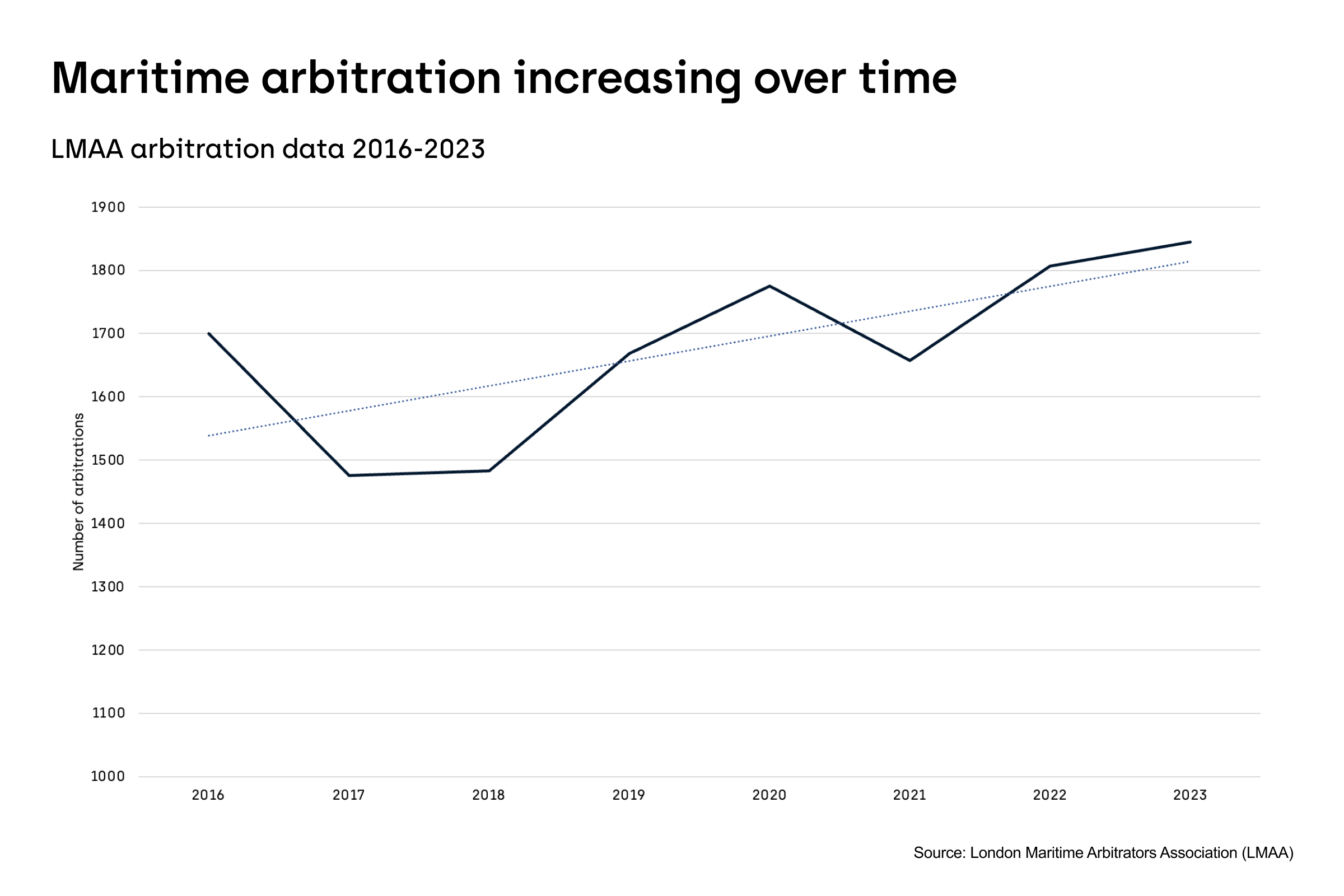Trends in shipping disputes - Claims down as maritime parties shift to arbitration
Global Head of Shipping at HFW, Paul Dean, talks to Solomonic to provide insight into the changing shipping industry, navigating turbulent waters amidst escalating geopolitical tensions, as claims see a downward trend and more stakeholders opt for arbitration.
As the maritime sector navigates through choppy waters amidst escalating serious geopolitical tensions, we delve into the data behind some major shifts. Attacks on shipping in the Red Sea have been global news since the first attack in November last year. The impact on supply chains is reported as driving increased shipping costs and delays on raw materials and products. We wanted to see how this might impact trends in shipping disputes, so we took a look at the volumes of claims involving the sector since 2014 and the results are surprising.
Since 2014 shipping and maritime parties’ involvement in disputes has more than halved and shows a clear downward trend.
However, this is not necessarily a sign of fewer disputes. We asked Global Head of Shipping at HFW, Paul Dean who commented:
“The decline in High Court disputes is in sharp contrast to an increase in the number of LMAA appointments and references in 2022 and 2023, which were themselves significantly higher than those in 2021.” Analysis of LMAA figures between 2016 and 2023 does show an increase over time, although this trend is not quite as significant. Reasons for a shift from litigation to arbitration include control, flexibility and potentially costs but as Dean noted, “I have been doing this job for 35 years and the popularity of arbitration v High Court goes through phases.”
The impact of Covid lockdowns is evident in 2020, though as Dean points out this may have been a short spike, “it was also our experience during COVID that parties to contracts were looking at ways to continue to conduct business together rather than, in uncertain times, become entrenched in litigation.”
There is some sign of a correlation in the litigation trend with the growth/decline in shipping trade (based on UNCTAD data between 2014 and 2020), though they have forecast a return to growth in 2023 and 2024.
However, the crisis in the Red Sea may well change this picture and Dean concurs, “we can certainly anticipate disputes to arise out of the challenges in the Red Sea. The other hotspot is going to be in relation to emissions and who pays.”
The Solomonic platform is used by leading law firms such as HFW, Linklaters, Pinsents Masons and Eversheds Sutherland to stay on top of the legal market, including sector-specific insights such as these. If you’re interested in seeing how we can help you track what matters to you and your clients, please get in touch with us info@solomonic.co.uk for a confidential introduction to the platform. Alternatively, sign up for a no commitment 1-month free trial of our flagship alerts service to receive a comprehensive summary of newly filed claims.



